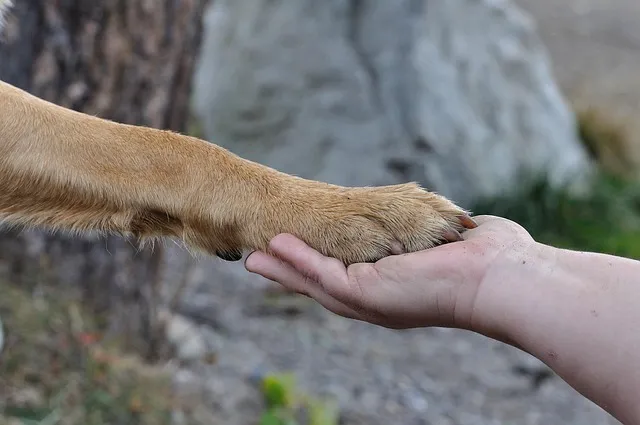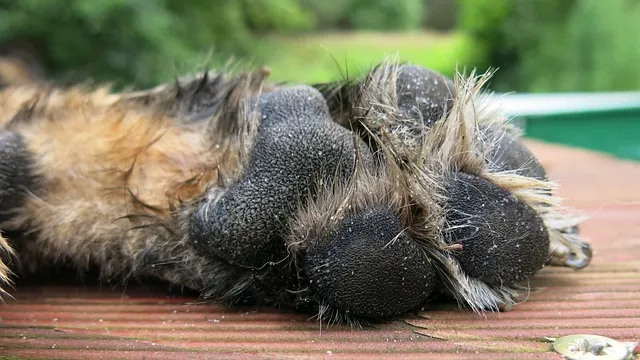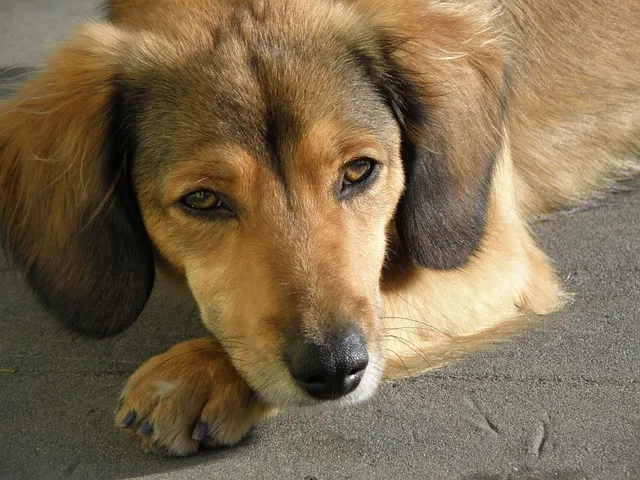It’s not uncommon to see a canine licking its paws now. While this can feel like an innocent jest, it can also be a signal of something deeper. Breeds may master their paws for several reasons, ranging from natural grooming instincts to underlying medical or behavioral issues. Understanding the environment and intensity of the shellacking is pivotal for determining whether your canine simply needs a bath or a visit to the veterinarian. So we understand the answer to this question ( Why Do Dogs Lick Their Paws? ).
Normal Grooming Behavior while Dogs Lick Their Paws
Just like pussycats, breeds also engage in grooming themselves to stay clean. Paw shellacking is part of this natural grooming process. After walks or playtime outside, breeds may use their paws to remove dirt, dust, slush, or small patches like lawn or beach. This kind of shellacking is generally occasional and short-lived. You’ll frequently see breeds licking one or two paws and also moving on. As long as there are no signs of vexation or injury, this gesture is It is considered normal and healthy.

Environmental Allergies
One of the most common reasons for patient paw shellacking is environmental disinclinations. Breeds, like humans, can be antipathetic to pollen, earth spores, dust diminutives, lawns, or indeed chemicals set up in drawing products and field treatments. When these allergens come into contact with a canine’s skin, especially the paws, which are constantly exposed, they can cause violent itching. The canine’s natural response is to master the bothered area to soothe the discomfort. In antipathetic breeds, the shellacking frequently worsens during certain seasons (spring and fall) or after being outdoors.
Food Allergies or Sensitivities
Another significant cause of paw shellacking is food disinclinations or illiberalism. Some breeds may develop antipathetic responses to constituents like beef, funk, dairy, wheat, or soy. Unlike humans, who may develop stomach issues, breeds with food allergies frequently witness skin problems, including itchy paws. This type of shellacking tends to be more habitual and may be accompanied by symptoms similar to those of observance disorder, puking, diarrhea, or greasiness around the paws and nib. An elimination diet, specified by a veterinarian, is generally required to identify the culprit component.

Fleas, Ticks, and Mites
Spongers are a common cause of itchiness and vexation in breeds. Fleas, ticks, and bitsy diminutives can all beget violent itching, especially on the legs and paws. Indeed, if you can’t see the pests, your canine’s shellacking gesture may indicate their presence. Flea saliva, for illustration, can trigger flea bite dermatitis (style), a condition where one flea bite can elicit an allergic response, leading to continuous licking and scratching. Diminutives, similar to those that beget mange, burrow into the skin and can be particularly prickly and painful.
Incentive or Bacterial Infections
Still wettish d has a foul smell. If a canine licks its paws excessively and the area appears red. These infections frequently develop in wet surroundings and can result from excessive shellacking itself, creating a cycle of vexation. Certain types, especially those with skin conditions or allergies, are more prone to these infections. Common signs include abrasion (brown or pink staining of the fur), swelling, an unwelcome odor, and a muddy texture on the skin. Veterinary treatment, including antifungal or antibiotic specifics, is generally needed to treat the infection.
Injuries and Foreign Objects
Breeds may also master their paws to address pain or discomfort caused by a minor injury or a foreign object. Cuts, bruises, nonentity stings, slivers, and bites from hot pavement or bedded debris can all irritate the paw pads. However, check for signs of trauma or swelling if your canine is focusing on one specific paw, and the licking is compulsive. Indeed, a commodity as bitsy as a nuisance or a purr can beget significant vexation. Breeds may also limp or avoid putting weight on the affected paw in these cases.
Joint Pain or Arthritis
In aged breeds or those with orthopedic issues, paw shellacking may be a response to common pain or arthritis. Breeds will occasionally master the area around a painful joint, such as the wrist or ankle, in an attempt to relieve the discomfort. While common pain is internal, the canine may still concentrate on licking the paw or leg near the sore joint. This gesture is more common in large types and growing breeds, and it’s frequently accompanied by stiffness, difficulty getting up, or a disinclination to run or climb stairs.
Behavioral Issues and Stress
Occasionally, paw shellacking isn’t due to a physical cause but a cerebral bone. Breeds can master their paws as a way to soothe themselves when they’re feeling weary, anxious, lonely, or stressed. This can be due to changes in the home terrain, separation anxiety, lack of internal stimulation, or decades of isolation. In these cases, the shellacking becomes a form of repetitive, obsessive gesture, analogous to a mortal smelling their nails. Over time, this can lead to hair loss, skin damage, and, indeed, open injuries if left unaddressed.

Obsessive Disorders
Still, your canine may be suffering from an obsessive-compulsive disorder if the paw licking continues long after any medical issues have been ruled out. Just like humans, breeds can develop compulsive-obsessive actions, especially if they’re under habitual stress or have endured trauma. In these cases, the shellacking is frequently constant and violent and may involve biting as well. Treatment generally involves behavioral therapy, increased exercise, enrichment conditioning, and occasionally anti-anxiety drugs prescribed by a warhorse.
When to See a Veterinarian?
Why Do Dogs Lick Their Paws? Occasional paw shellacking isn’t a cause for concern. Still, if your canine is licking their paws constantly, to the point of causing greasiness, swelling, fur abrasion, or bleeding, you should consult your veterinarian. Any unforeseen onset of violent shellacking, or shellacking concentrated on one paw, also deserves attention. A veterinarian can perform physical examinations, skin tests, dislike testing, and blood work to determine the exact cause. Beforehand intervention is crucial to precluding the gesture. From getting a long-term issue or causing more serious health problems.
How to Help Your Dog Stop Licking Their Paws?
Depending on the cause, treatment can include:
. Medications like antihistamines, antifungals, or antibiotics
. Sponge Control using flea and tick preventatives
. Diet Changes to exclude allergens
. Paw Cleaning after walks to remove annoyances
. Behavioral Remedy or increased internal and physical exertion
. Defensive Gear, similar to canine thrills or an Elizabethan collar, to break the shellacking cycle
Thickness and tolerance are pivotal. Always follow your warhorse’s guidance and avoid home remedies that could worsen the condition.

Final Thoughts
Why Do Dogs Lick Their Paws? Because it can be a normal grooming habit or a sign of a deeper issue, ranging from disinclinations and injuries to infections and emotional torture. The key is to observe the frequency, duration, and intensity of the shellacking. Occasional shellacking may be inoffensive, but a patient or compulsive gesture needs to be delved into. With proper care, attention, and medical support if necessary, you can help your canine feel more comfortable and help implicit complications in the future.
Some more related Questions:
. Can Dogs eat Cucumbers?







